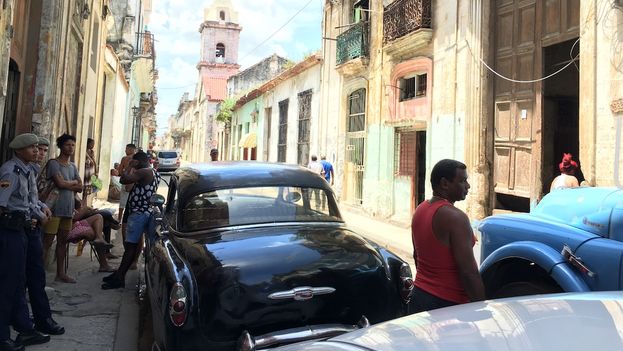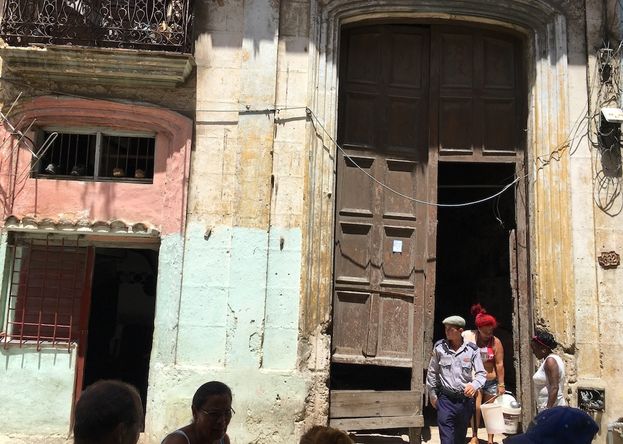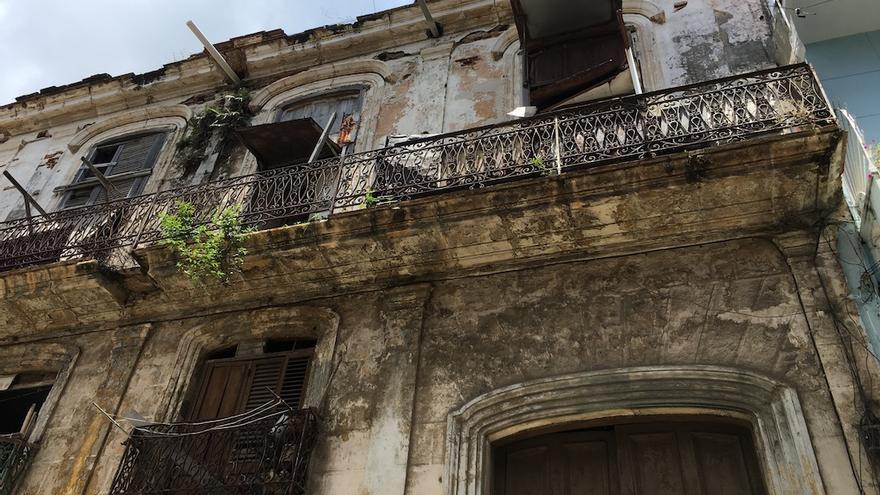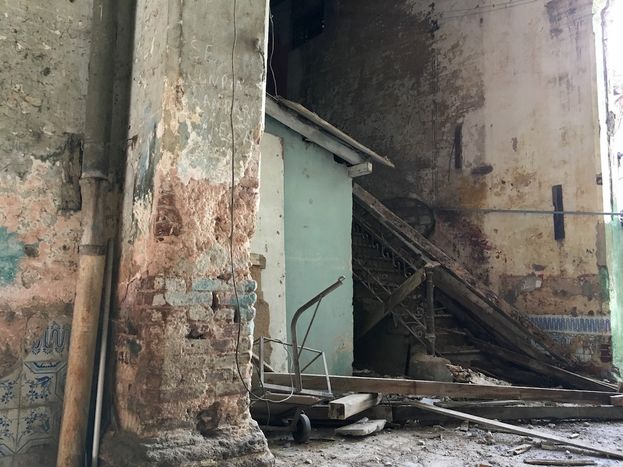
![]() 14ymedio, Luz Escobar, Havana | 30 June 2018 — A few yards from the place where tourists are trying to take a photo with the sign for Cuba Street, in Old Havana, a dozen people have planted themselves outside a half-demolished building to demand a decent home. At least 14 families have been out in the open for five days, according to statements collected by 14ymedio.
14ymedio, Luz Escobar, Havana | 30 June 2018 — A few yards from the place where tourists are trying to take a photo with the sign for Cuba Street, in Old Havana, a dozen people have planted themselves outside a half-demolished building to demand a decent home. At least 14 families have been out in the open for five days, according to statements collected by 14ymedio.
After an intense downpour last weekend a part of the roof collapsed at number 662 Cuba Street. Camping out on the sidewalk since Monday, the residents are demanding that the authorities relocate them to another building or one of the many vacant state offices in the area.
This Friday, under the strong midday sun, some residents sought shelter in a narrow shadow under the projecting facades, waiting for an official response to their demands.
Tourists walk through the neighborhood, oblivious to the scene of a row of families who use the street as if it were communal housing, where a baby sleeps in his cradle while a little coffee is brewed using an extension cord run from the interior of a building whose neighbors are offering solidarity.

“It’s dangerous to enter the building, that’s why we’re here to protect you from being crushed,” one of the officers explained to 14ymedio, while playing with his nightstick. The warning has little effect because inside the building are all the belongings of the families and some take risks to recover them.
“If we do not take our things they will be lost, explains a resident who initially told this newspaper his name, but a few minutes later he asks for anonymity to avoid “suffering repression after the article comes out on the internet.” Nobody wants to put at risk their chance that their complaint will get them a safe roof.
However, the disagreement is source of great stress. “We are on the street, no one has come from either the Government or the Housing Institute, the only response we have received is that we must wait and that there is no capacity in the shelters,” the resident adds.
At the end of last year, after the damage in the Cuban capital left by Hurricane Irma, the availability of spaces to house those who lost their homes was exhausted in the shelters, collective temporary locations where families can wait up to two decades for a house.

The authorities recognize that the housing problem is the primary social need in Cuba, with a deficit of more than 800,000 homes. This problem is aggravated because in the last decade the construction of new houses has fallen by 20%. At the end of 2015, it barely exceeded 23,000, more than half raised through private management.
Outside the semi-ruined building on Cuba Street, a young woman says that the building was “declared uninhabitable” in 1980 and although they have lived through hell all this time “luckily on the day of the collapse no one was hurt.”
The woman is pessimistic and believes that nothing will be resolved because “the people are not united,” she explains. “No one wants to talk to the press because they are afraid and then the police come to ask who was talking to the journalists.”

The protest that they are carrying out supposes a push with the Government and the Office of the Historian of the City, that manages the entire zone from a heritage perspective. What’s more, in the midst of the planning for the celebrations for Havana’s 500th anniversary in 2019, which is coming at a time of the celebrations for the 500 years of Havana that are fulfilled in 2019 and that come at a time of decline and difficult straits for the capital.
This week the historian of the city, Eusebio Leal, called for recovering “the dignity” of Havana and “not humiliating it” by painting “her in colors she doesn’t know,” throwing garbage in its streets or urinating in its corners. “Dignity begins with the people, through the homes,” a resident claims as he fans himself outside 662 Cuba Street.
__________________
The 14ymedio team is committed to serious journalism that reflects the reality of deep Cuba. Thank you for joining us on this long road. We invite you to continue supporting us, but this time by becoming a member of 14ymedio. Together we can continue to transform journalism in Cuba.
